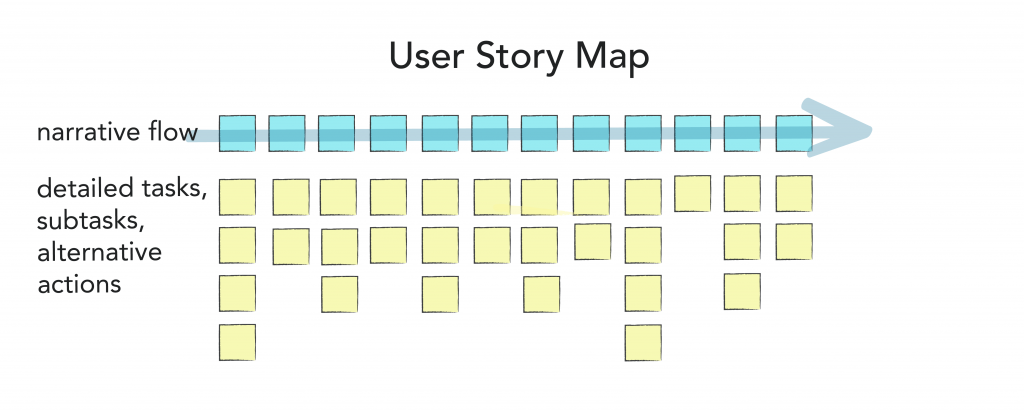Writing agile user stories is one of the most important and pivotal options that you need to take into consideration. Not only are these some of the primary development artifacts for XP and Scrum teams, but they are also defining the requirement. Most examples of good user stories are all about offering the information that the developers need to estimate the amount of work needed in this situation.
You can see the user stories as a talk that you have with your customers. They are high level, yet slim requirements artifacts and their primary focus is on offering you the information needed to boost the development process.
Some user stories would be “Students Can Order A Transcript” or “A Student Can Enroll In A Seminar With Special Requirements”. These are crucial to write, and most of the time you will see that these stories are incredibly easy to go through.
What are user stories in agile methodology?
The team will work closely with the customer to implement the user stories. The stories are created in order to boost the value of that product. However, the assumptions need to be tangible, which is why you need to reify them in a physical format. That’s what gives a proper approach to the user stories and makes them a lot better and certainly more tangible.
Usually, one of the main problems is that the agile approach is focused solely on the development team and that can bring in front some rather challenging situations. In fact, each user story is focused on using the 3C’s model that makes it comprehensive and unique. However, you should not see the user story as a document. This is a concept design to help you improve the current version of a product and maybe even take it to the next level.
A thing to take into consideration is that once you learn what are user stories in agile methodology, it will be a very good idea to use them right away. After all, nothing is better than improving your products, and this way you can get a very good way to do just that at all times.
Moreover, a thing to keep in mind is that the level of detail for user stories will vary as well. They can be pretty simple at first, with the level of detail increasing as you go along. This shows that user stories are evolving, and it makes the experience more comprehensive.
You shouldn’t write agile user stories with the idea that they are a use case. Sure, there are some similar things here, but they don’t have one to one mapping, and that’s the type of thing that you want to avoid. Plus, you shouldn’t confine the user stories to a user interface or technical component. It’s different as a whole, and it can bring in front a huge set of values.
You may be wondering, what does writing agile user stories can bring to the table. There are plenty of benefits that you can obtain in this regard, so here are some of the most important ones that you can harness right away.
- You can easily mitigate delayed feedback risks
- Developers can get a precise and clear acceptance criteria
- This offers a much better way to define what to work on and how to work
- You get to work with smaller increments
- You will find it easier to manage all software pieces, and production can be handled with a much better efficiency.
Usually, user stories are all about bringing in front an incremental development that will help take your products to the next level. Used adequately, these user stories are here to bring in front an outstanding and unique set of solutions. You get to boost the testing strategies and many times you can easily automate everything if you want. An App prototype can help you as well, which is a thing to take into consideration.
The user stories have to be written clearly and in a simple language. Making them too long or too complex can be an option, but most of the time it will not be a good one at all. As long as you focus as much as you can on keeping the user stories simple, results will be more than ok.
The template you should use for user stories is: As a ……, I want ….., So That …. If you get to complete all of this adequately, you will not have a problem creating proper and insightful user stories in no time.
How to write good user stories in agile?
When you learn how to write good user stories in Agile, you always have to think about customers and the fact that they come first. Make sure that you tell the story with a focus on functionality. Users are directly interested in that product, and that’s exactly the thing you need to showcase in the user story.
Moreover, writing agile user stories is all about using personas to discover the right stories. Personas may be fictional, but they can be good to showcase what a person wants via that persona. It’s important to use an acceptance criteria in agile user stories too, as this will make the entire experience more comprehensive and distinct because of it.
And while there, make sure that you create stories collaboratively. This approach works because it provides you with the means to gather ideas, feedback, and data which are coming to the dev team. From here, the user stories will lead to a new idea, feature or an update for the previous version.
As we mentioned above, user stories have to be as simple and as concise as possible. The template we listed earlier is a good way to create user stories that work very well and which bring in front the solutions and features you need.
When you want to write agile user stories, your focus should be on starting with epics. These are known as the coarse-grained stories, and they end up being broken down into multiple stories. Of course, you don’t have to make them very detailed right off the bat. The results can be extremely good and there will be a lot of value with the user stories as long as you include epics. These can help you gain more insights while also reducing the effort and issues that may appear.
Just like a prototype, your user stories need to be refined until they are ready. Make sure that you go through them multiple times to be sure that your user stories work great and offer the value you may expect.
Another important thing here is to make sure that you use paper cards and you add the acceptance criteria. The latter one will help complement the narrative, and it will make it easier to describe the conditions to make the story complete and feasible in the end.
Even so, you need to make sure that you use other tools like workflow diagrams, mockups, storyboards, story maps and so on. These are complementing the user stories and offer a much better perspective as a whole. Lastly, do try and keep the user stories visible and accessible. They shouldn’t be hidden, instead, everyone should be able to see them!
Examples of good user stories
When you are writing agile user stories, you should always try to use examples of good user stories from a template. Yes, a free template will be more than ok, and in the end, it can offer you all the information you need. This template requires all of these ideas and tools, as listed here.
- User story ID – this is necessary in order to name the story and make it easier to track
- As a <type of user> – here you should integrate the user type and figure out what works great for your products and services.
- I want to <perform some task> – you can add any task you want, as long as it’s relevant and connected to the user story
- So that I can <achieve some goal> – the task above should be interconnected with the goal, in fact, it should showcase the means of completing that goal adequately.
- Priority <Low, Normal, High> – prioritizing a task is a crucial thing to keep in mind, and it can provide you with a lot of information.
Your startup needs an MVP, but it also needs some proper and outstanding user stories. Once you are using acceptance criteria in agile user stories, results can be more than ok and very interesting. Plus, the value on its own can be outstanding, and that’s the thing which matters. However, you should keep in mind the ideas listed above to make the user stories professional and comprehensive.
In conclusion, making sure that you opt for the best user stories can indeed help your business a lot. You should consider learning what are user stories in agile methodology and then use this information to take your business to new heights. The focus here is on improving the customer base, and that’s the thing that matters the most.
KFG International are here to help you, so if you need a mobile app development company that takes user stories and other methodologies into account, results will be more than ok. All you have to do is to get in touch with KFG, and it will be very easy for you to create high standard, professional user stories that help take your business to the next level. Check it out, and you will be more than amazed with the outcome!
Immediately you may start working on creating user stories for your project by answering our User Stories Chat Bot questions. Resulting user stories to be provided in form of PDF document. By click of a button once all the questions answered. Start your project now.




